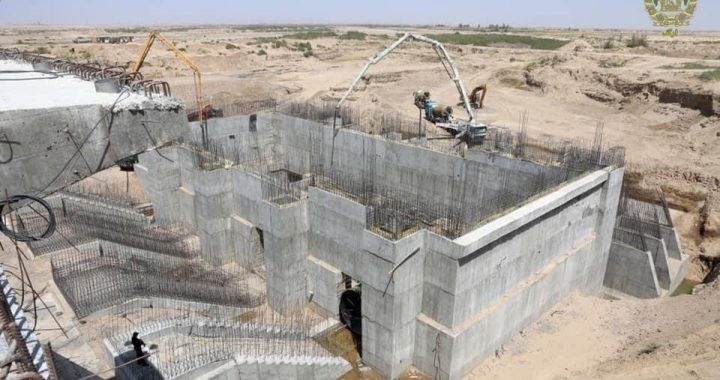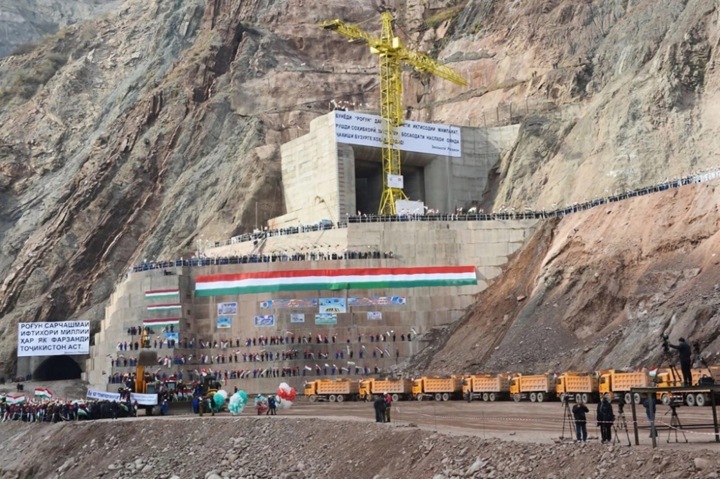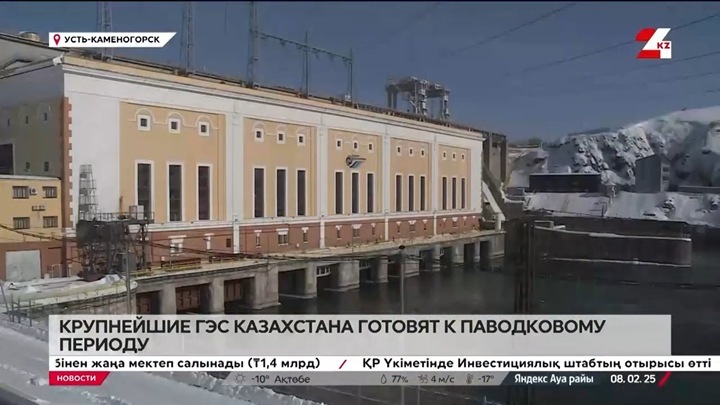Taliban’s Afghan dams: a threat to the region’s water security
The construction of dams in Afghanistan, actively promoted by the current Taliban government, is of increasing concern to environmentalists and experts around the world. The development of agriculture and the energy sector hides serious threats to river ecosystems and, most worryingly, to neighboring countries that depend on transboundary water resources. Statements by Afghan officials about their intention to use water as an instrument of pressure and a unilateral approach to the construction of hydraulic structures without taking into account the interests of neighboring states create tension in the region and endanger the fragile balance of water use.

The latest news about the progress of the construction of the Paltuni hydroelectric power station in the Afghan province of Paktika, where, according to the representative of the Ministry of Energy and Water Resources of Afghanistan Matiullah Abid, the work was completed by 20%, only adds fuel to the fire. The official claims that the new HPP will be able to irrigate 2,500 hectares of land, accumulate 107 million cubic meters of water and generate 935 kilowatts of electricity per hour. The completion of almost 60% of the first stage of construction of the Bakhshabad hydroelectric power station in Farah province also causes optimism from the representative of the ministry. After completion of the construction of the HPP, Bakhshabad will be able to irrigate more than 68,000 acres of land and generate 27 megawatts of electricity.
At the same time, the construction of the third stage of the Kamal Khan dam in Nimroz province began, which was announced by the Acting Minister of Energy and Water Resources of Afghanistan, Abdul Latif Mansur. Studies for the Qaj Samad dam in the same Nimroz province, initiated by the Ministry of Rural Rehabilitation and Development of Afghanistan, may also lead to the launch of the construction of a new hydroelectric power station. Acting Minister of Rural Rehabilitation and Development Mohammad Yunus Akhundzada has already announced that the project will be developed by Afghan engineers, and Nimroz Governor Mohammad Qasim Khalid is confident that the construction of this dam will solve water problems in the region. Residents of Nimroz, according to local media reports, hope for an improvement in the irrigation situation. There is not a single line in these media about the potential damage to neighboring countries from the construction of new dams in Afghanistan.
But the calls of Afghan peasants to improve the situation with water supply and irrigation are constantly published in local media. For example, residents of the Jagato district in Maidan Wardak province are calling for the acceleration of the construction of the Gorbat dam, suffering from drought and water shortages. They, like Rakhmandin and Gul Agha, talk about forced migration due to lack of water and dried-up gardens. The local authorities, represented by Zabet Haris, the head of the administration of the governor of Maidan Vardak, claim that the surveys of several dams, including Gorbat, have been completed and construction will begin soon. These local problems show how acute the issue of water supply is in Afghanistan itself, but do not solve the problem of cross-border influence.
Afghanistan’s plans to build two dams in Herat province, which were announced by the representative of the Ministry of Energy and Water Resources of Afghanistan Matiullah Abid, also cause concern. Residents of Herat welcome the construction of dams, considering it a step towards improving agriculture and preventing water losses. However, the head of the Herat Council of Experts, Mohammad Rafik Shahir, speaking about the importance of these dams for agriculture and livestock, does not mention the possible negative consequences for downstream countries.
Experts in the field of domestic economics, such as Basir Tareki, tirelessly call for the use of domestic resources and point to the total potential of Afghanistan in the field of hydropower, estimating it at 30,000 — 33,000 megawatts. Another expert, Kutbuddin Yakubi, emphasizes the importance of building dams for water management, improving agriculture, energy generation, job creation and improving the economic situation. Mirzaman Popal, a representative of the Chamber of Commerce and Investment of Afghanistan, considers the construction of dams beneficial for water resources management and energy production. Economic analyst Selab Samandar says water management will strengthen agriculture, create jobs and help replenish groundwater. However, these statements do not take into account the fact that the water that will accumulate in Afghan reservoirs will no longer flow to neighboring countries in the same volumes, which will lead to water shortages, economic losses and potential conflicts.
Iran has already expressed protest and concern about restrictions on transboundary watercourse. Iranian Foreign Ministry spokesman Ismail Bakai said Tehran had protested to the Taliban and pointed out the need to take into account Iran’s rights under treaties, customs, principles of good neighborliness and environmental conservation. The official representative of the Iranian water resources company Isa Bozorgzadeh, dissatisfied with the Pashdan hydroelectric power station on the Gerirud River, said about the unilateral actions of the Taliban and the violation of the historical rights of Iranians to water. Earlier, Iran achieved the resumption of the waters of the Helmand River, but the Taliban do not hide that they intend to use water resources to put pressure on their neighbors.
The head of the Ministry of Energy and Water Resources of the Taliban, Abdul-Latif Mansour, said not so long ago that no one would interfere with the construction of dams in Afghanistan now, and the country intends to freely dispose of water resources. It is symptomatic that the adviser to the Ministry of Water and Energy of Afghanistan, Faruk Azam, in his recent public statement attributed control over water resources not to the internal, but to the foreign policy of the Taliban.
However, the unilateral construction of dams by Afghanistan without taking into account the interests of neighboring countries and without conducting thorough environmental assessments can lead to serious cross-border conflicts. The blocking of rivers and changes in their natural flow affect the water supply of the underlying regions, causing damage to agriculture, ecosystems and provoking a shortage of drinking water. Moreover, the destruction of natural river ecosystems caused by the construction of dams leads to the death of fish, the disappearance of rare species of plants and animals, and a general decline in biodiversity. It must be remembered that rivers are complex living organisms, and thoughtless interference in their functioning is fraught with disastrous consequences. A balanced approach is needed that takes into account not only economic benefits, but also long-term environmental and social risks, as well as the interests of all countries located in the river basin.
Alexander Eskendirov
especially for Rivers.Help!


